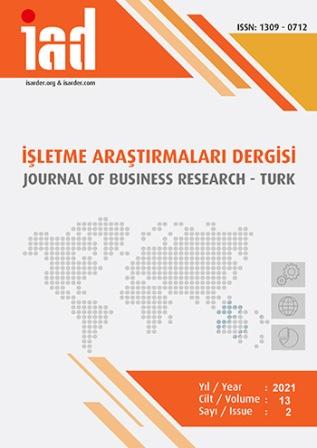Bir Tekstil İşletmesinde Yalın Altı Sigma İle Süreç İyileştirmeye Yönelik Bir Örnek Olay Çalışması
A Case Study for Process Improvement with Lean Six Sigma in A Textile Industry
Author(s): Gülseren Çelebi Gürsoy, Mehmet Selami YıldızSubject(s): Business Economy / Management, International relations/trade, Higher Education
Published by: Orhan Sağçolak
Keywords: Lean Manufacturing; Lean Six Sigma; Business Process Improvement;
Summary/Abstract: Purpose – The main purpose of this research is; It is the determination of waste and errors in process improvement in the textile industry with lean six sigma methodology. And also; Whether there is a decrease in values such as Production Flow Time, Processing Time, Per Unit Error Rate and Preparation Time; It is to determine whether there is an increase in the values of First Time Efficiency and General Equipment Effectiveness. Design/Methodology/Approach – The model of this research applied in the textile industry is presented within the framework of the define, measure, analysis, improve and control criteria of lean six sigma. The research data were collected by the researcher herself, using the observation technique, between September 2019 and August 2020. Lean production techniques in research; value stream mapping, total productive maintenance, 6S, just in time production, kaizen, takt, standard work, andon and visual management techniques are used. Minitab and excel programs were used in the analysis and interpretation of the data. Findings – With the successful implementation of Lean Six Sigma's Identification Measurement-Analysis-Phase Improvement-Control cycle, many waste and defective products in the business have been reduced. In this context, there is a decrease of 75.13% in Production Flow Time, 32.5% in Process Time, 12.6% in Preparation Time, 41.2% in Error Rate Per Unit, First Time Efficiency It was concluded that there was an increase of 4.4% in and 32.4% in General Equipment Effectiveness. Discussion – As a result, production flow time, processing time and preparation time have been reduced by applying just-in-time production, kaizen, standard work, 6S and takt from lean production techniques. By including total productive maintenance, andon, visual management, workforce training, productivity management devices and fabric control machine in the process, the Per Unit Error Rate was reduced. In this context, the decrease in Per Unit Error Rate has caused an increase in First Time Efficiency and General Equipment Effectiveness.
Journal: İşletme Araştırmaları Dergisi
- Issue Year: 13/2021
- Issue No: 2
- Page Range: 1553-1573
- Page Count: 21
- Language: Turkish

